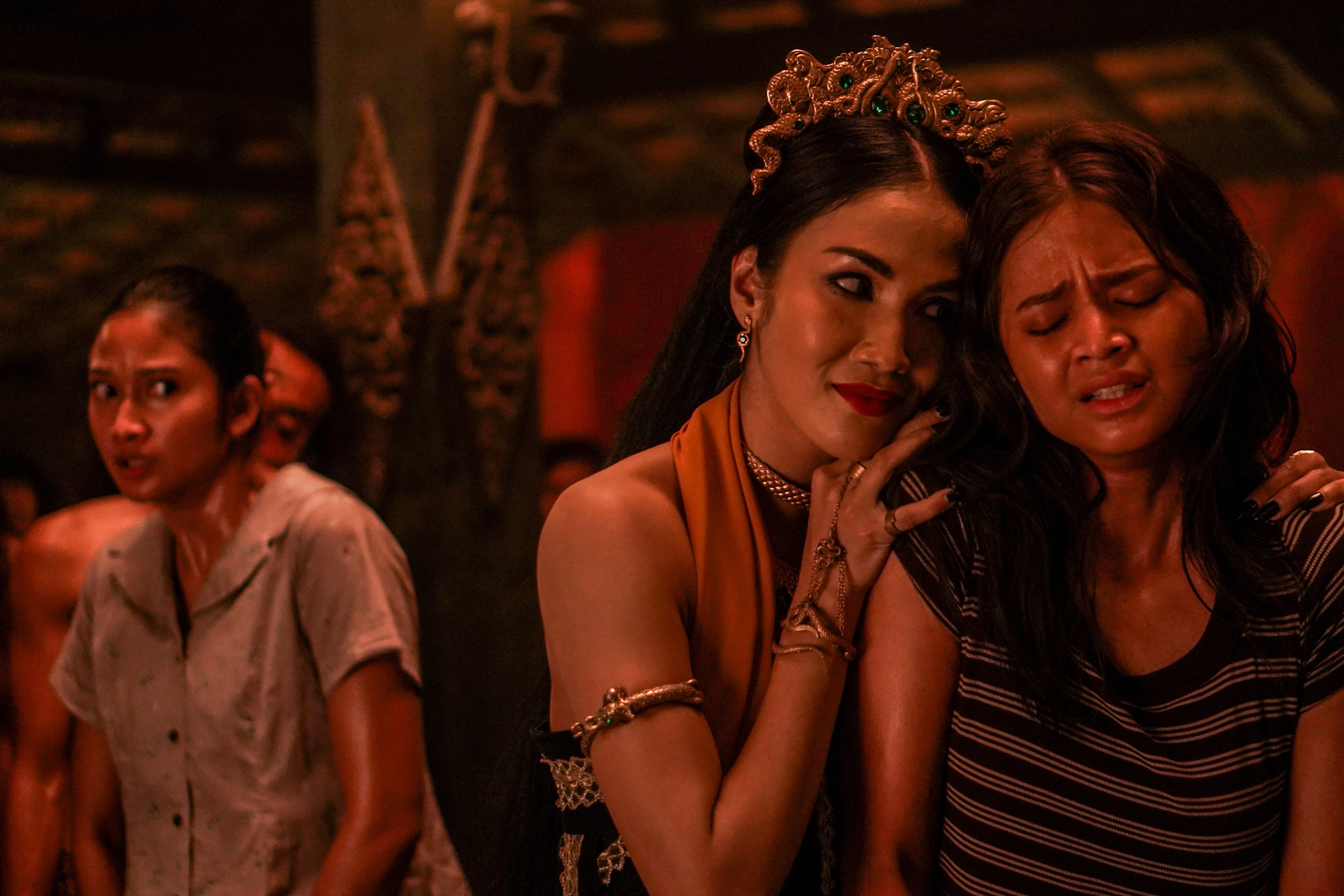Stepping into the realm of Indonesian horror cinema often promises a unique blend of cultural mythology and spine-chilling narratives. Dancing Village: THE CURSE BEGINS, directed by Kimo Stamboel, delivers just that, immersing viewers in a terrifying legend centered around a cursed dancing village. While the film might leave some threads of its intricate mythology untied, its atmospheric dread and captivating performances, particularly by Aulia Sarah, make for a compelling horror experience.
The film cleverly employs a dual timeline, opening in 1955 with a chilling ritual in a remote dancing village. Young women, poised in traditional dance, are not merely performers but participants in a sacrifice intended to appease a malevolent spirit, Badarawuhi, who holds the village captive. However, this ritual is a ruse to seize a powerful bangle from the demon, an act of rebellion to liberate their community from its sinister grip. A young woman becomes the custodian of this powerful trinket, fleeing into the forest as Badarawuhi (Aulia Sarah) unleashes her wrath, demanding the bangle’s return.
 A scene from Dancing Village: The Curse Begins showcasing the tense ritualistic dance.
A scene from Dancing Village: The Curse Begins showcasing the tense ritualistic dance.
The narrative then jumps to 1980, where we meet Mila (Maudy Effrosina), the daughter of the woman who escaped with the bangle. Mila, accompanied by her cousin Yuda (Jourdy Pranata) and friend Arya (Ardit Erwandha), returns to the ominous dancing village. Her mother is in a mysterious, coma-like state, possibly hinting at a demonic influence. Guided by a shaman’s advice, Mila’s mission is to return the bangle to the dancing village, hoping to break the curse that plagues her family and perhaps the village itself. However, as is often the case in horror, their plans take a decidedly dark and unexpected turn.
Director Kimo Stamboel masterfully manipulates time, weaving flashbacks into the present narrative of DANCING VILLAGE. This fractured timeline is not always seamless, occasionally creating moments of confusion, particularly during a flashback depicting the bangle theft during the initial ritualistic dance. Yet, this non-linear approach ultimately serves to gradually reveal the layers of mystery surrounding the dancing village and the motivations behind Mila’s return to this cursed place.
Where Stamboel truly shines is in building an atmosphere of mounting supernatural dread. He utilizes a range of cinematic techniques, starting with practical elements – the unsettling smoke from roasting corn, the jarring flashes of strobe lights during hallucinatory sequences – to more sophisticated camera work. Subtle shifts in color palettes, unsettling on-screen transformations, and innovative camera movements, such as pushing into and out of a character’s perspective to dramatically alter their surroundings, all contribute to the film’s palpable sense of unease.
 Badarawuhi, the seductive demon of the Dancing Village, portrayed by Aulia Sarah.
Badarawuhi, the seductive demon of the Dancing Village, portrayed by Aulia Sarah.
However, the most potent tool in Stamboel’s arsenal of terror is undoubtedly Aulia Sarah’s portrayal of Badarawuhi. Her performance is a mesmerizing embodiment of seductive evil. Badarawuhi, in Sarah’s hands, becomes an unforgettable demonic figure, radiating sensuality and menace in equal measure. Whether she’s invasively violating personal space or dragging Mila into a terrifying netherworld where tormented souls are condemned to dance for her amusement, Sarah’s Badarawuhi is a chillingly captivating villain. She embodies a malevolence that crawls under your skin, leaving you both terrified and yearning for more of her mesmerizingly dark presence.
One wishes the film had delved deeper into the cultural context of the dancing village itself. The film hints at the village’s name originating from the dance talents it cultivates, and we witness scenes of women practicing traditional dances. However, the connection between the village’s cultural identity, particularly its dance traditions, and the supernatural forces that haunt it remains underdeveloped. Exploring this link further would have enriched the narrative, providing a more compelling backdrop to the horror elements. Understanding the significance of dance in this cursed dancing village could have amplified the film’s thematic resonance.
DANCING VILLAGE: THE CURSE BEGINS serves as a prequel to KKN DI DESA PENARI, where Aulia Sarah first introduced Badarawuhi to audiences. Even without prior knowledge of KKN, DANCING VILLAGE stands alone as a chilling tale. Any minor plot ambiguities are overshadowed by the film’s expertly crafted suspense and striking visual style. It’s a ghost story imbued with a distinct Indonesian flavor, making it a worthwhile cinematic journey for horror enthusiasts seeking something beyond the typical Western fare. The film’s strength lies in its atmospheric horror and the unforgettable portrayal of Badarawuhi, solidifying its place as a noteworthy entry in Indonesian horror and a chilling exploration of a cursed dancing village.
